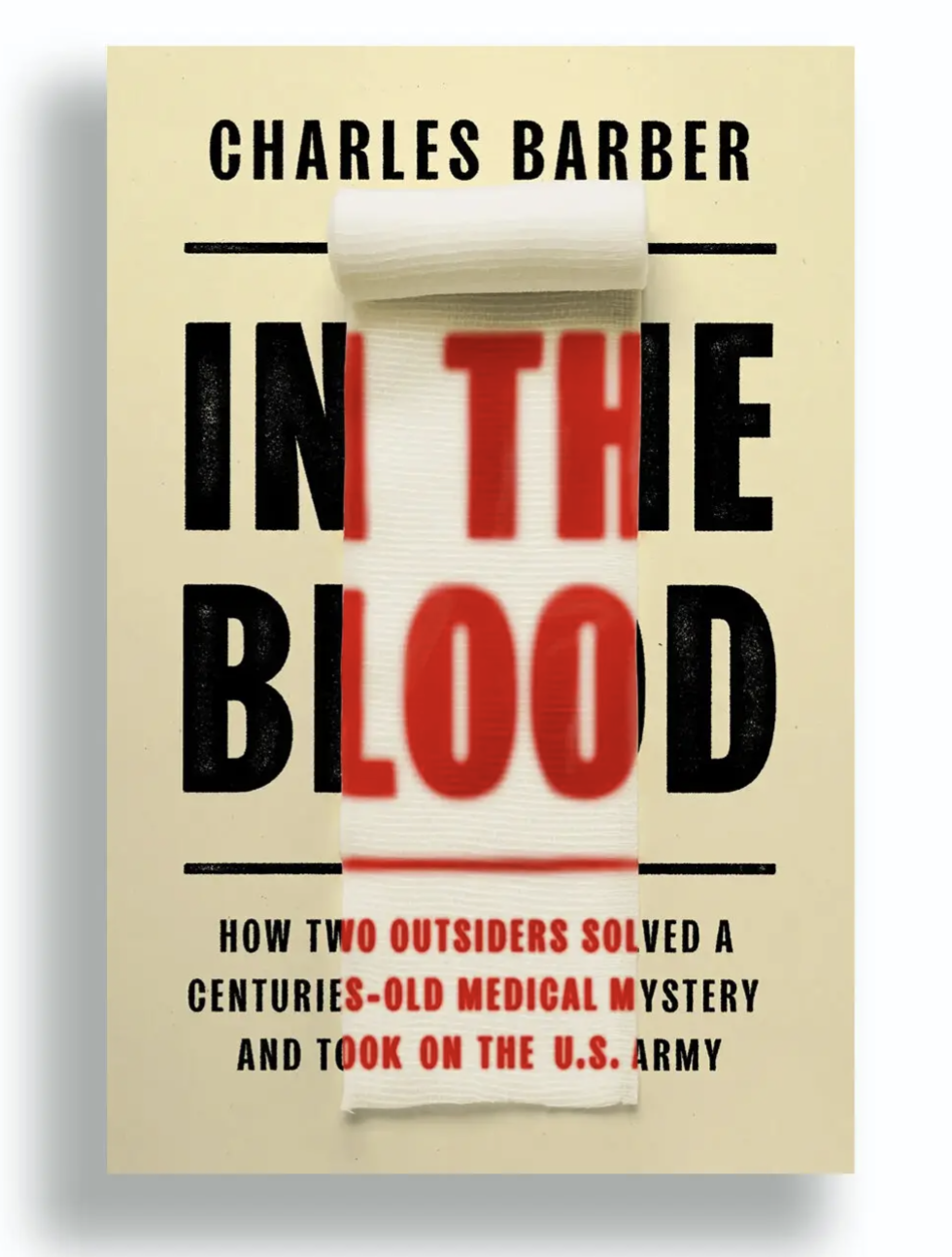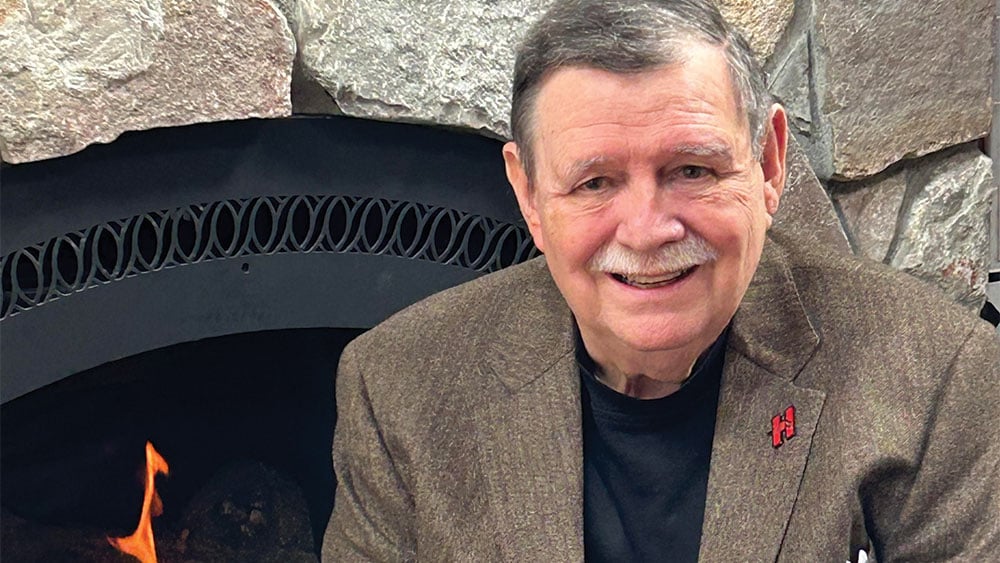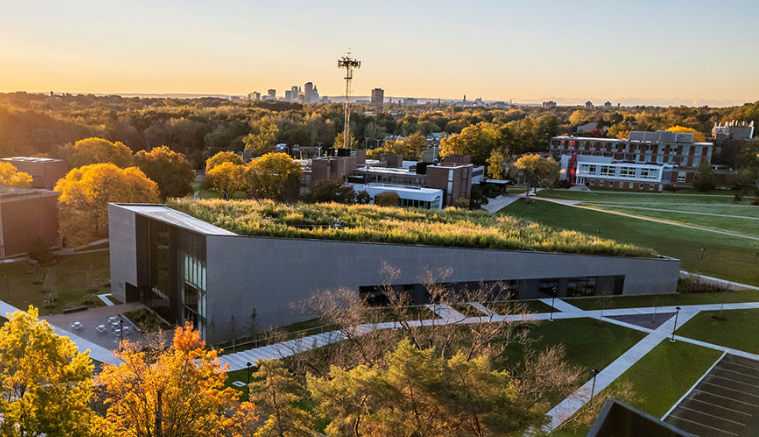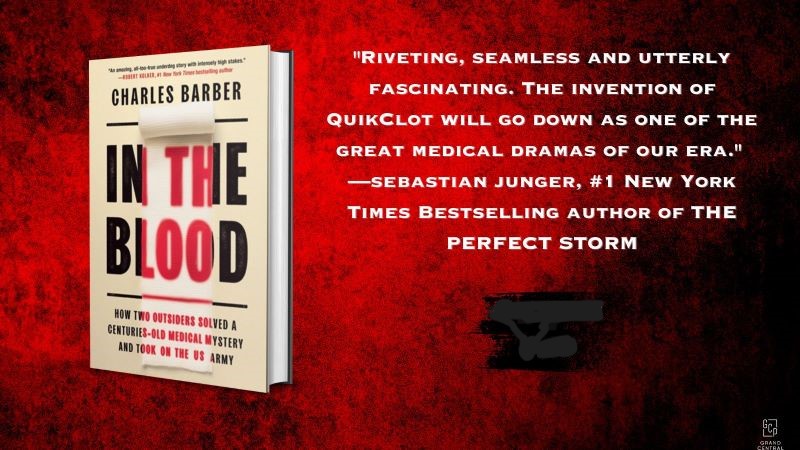Bloody Good
In the Blood, Charles Barber (2023)
This book is so good.
I don’t care if you’re not a non-fiction reader. You’ll enjoy this book. It is as good as any mystery or thriller simply because it is a mystery and a thriller. And bonus: it all happened in Connecticut. (Well, except for the parts in Somalia and Iraq and Afghanistan I guess.)
And it’s crazy that more people don’t know this story and that Frank Hursey isn’t famous. Heck, he lives in West Hartford! So do I! And I’d never heard of him until I read this book! Written by a professor at Wesleyan!
And I’d still never have heard of this book and more importantly, the story within, if I hadn’t gone to the Greater Middletown Military Museum and had been more or less forced to accept a tour from a knowledgeable docent. It was she who pointed out the book and effusively sold me on it.
“I know it doesn’t sound like a thriller, but you should read this book. It’s a fast read and an incredible story.”
Thank you, knowledgeable woman at the Greater Middletown Military Museum. How right you were.

(Interestingly, the New York Times’ review of the book is highly critical of some of the details surrounding certain military battles described within. While I agree such details are important, the story here is about Frank Hursey and Bart Gullong and their miracle products, not the intricacies of a battle sequence in Mogadishu.)
My review here won’t contain any details either, because the day after I finished the book, I gave it to my father-in-law to read. (In other words, I lost all my reference material when he took it and returned it to the library.) But I was more than happy to have him read it.
To wit: my father-in-law is a war veteran who surely saw some things that the product Hursey invented would have helped. He has lived in New Britain ever since coming to America after the Fall of Saigon in 1975 – the fateful first meeting of Hursey and Gullong happened at none other than Paradise Pizza in New Britain, formerly owned by fellow Vietnamese refugees that my inlaws know.
And Hursey’s unassuming scientific partner since the beginning? A guy named Sanh Pham, who not only is Vice President of Research and Development and Chief Engineer at Onsite Gas Systems (a Hursey company), he is a friend of my father-in-law. Crazy, I know.

Frank Hursey (from Investor’s Business Daily)
The book opens with the infamous “Black Hawk Down” catastrophe in Somalia and Barber writes of the Battle of Mogadishu and explains how traumatic bleeding is what has killed the most soldiers throughout history. Military medics had been using the same methods for centuries to deal with it: pressure and gauze.
The intricacies and complexity of the blood clotting process has confounded scientists and physicians for centuries. This book explores many of the failed attempts at understanding and manipulating the body’s “clotting cascade” and the almost accidental discovery of the hemostatic capacity of zeolite by mechanical engineer Frank Hursey.
Hursey was an unassuming and struggling engineer, putzing around at Pratt and other local firms. In his down time, he’d tinker with things and one day discovered that the cheap, readily available mineral stopped bleeding on a mouse in his basement. He thought that was pretty cool. (He also thought that it would work due to its unique properties, it’s not like he had some zeolite lying around that he spilled on a bleeding mouse.)
Hursey knew that zeolite, an innocuous mineral that costs nearly nothing and is abundant, has a unique chemical structure that “traps” water in molecular caverns – essentially extracting water from whatever it contacts, including blood. The “dehydrated” blood elements then form a stable clot.
Sure sounds like something EMTs, hospitals, and the military would jump on, right?
Thus begins the story of how absurd, inefficient, stubborn, and downright stupid the bureaucracy of our military-industrial complex can be.
We learn how the branches of our military don’t always work nicely with each other when it comes to large contracts. We learn that in order to penetrate the Army’s Byzantine web of bureaucracy, you need to know the right people. We learn that the Army won’t pay any attention to a lone mechanical engineer who builds gas machines when there’s an international darling firm with a vastly inferior product they can waste money on.

The Hursey Center at UHart
The story is just crazy. The Navy and the Marines agreed on the near-miracle protection of Hursey’s QuikClot dressing whereas the Army kept coming up with false narratives as to why were wasting millions of dollars on inferior products.
Salesman Gullong is almost a comic foil to Hursey’s engineer mind. There are fortunate meetings and last ditch efforts. There are huge DOJ lawsuits and international intrigue. Patent law fights. There’s death and there’s life. This is a true David and Goliath story.
Today, the University of Hartford has the Francis X. and Nancy Hursey Center for Advanced Engineering and Health Professions, a new 60,000 square foot educational facility in the heart of the campus. Hursey holds about a dozen patents from his research and development efforts, most of them having to do with oxygen and nitrogen delivery technology.
I absolutely loved this book and would recommend it to almost anyone. A rare 5-star endorsement, despite 5-star Army Generals featuring as the bad guys in it at times.

![]()
CTMQ’s List and Reviews of Connecticut Books
CTMQ’s visit to the Greater Middletown Military Museum

Leave a Reply